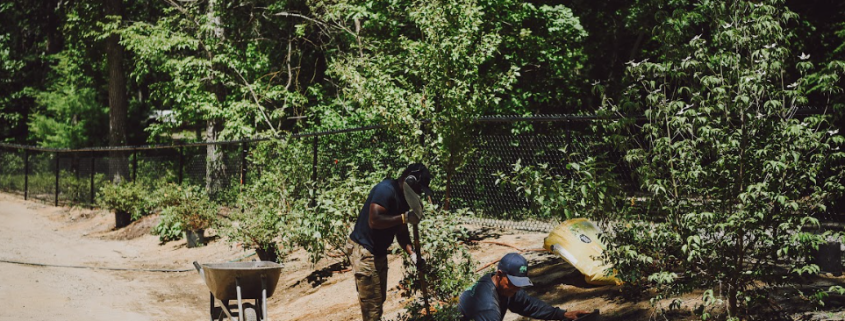Expert DIY Landscape Maintenance: Tea Lane Nursery’s Pro Tips and Tricks
Welcome to Expert DIY Landscape Maintenance: Tea Lane Nursery’s Pro Tips and Tricks
Welcome to the lush and vibrant world of Tea Lane Nursery, where the beauty of nature meets the expertise of seasoned horticulturists. If you’re passionate about maintaining a stunning landscape that radiates with life and color, you’ve come to the right place. At Tea Lane Nursery, we believe that anyone can become a landscape maintenance pro with the right guidance and knowledge.
In this blog, we are thrilled to share with you a treasure trove of expert DIY landscape maintenance tips and tricks that will elevate your outdoor space to new heights. Whether you’re a seasoned gardener looking for fresh ideas or a novice eager to learn, our team of dedicated professionals is here to empower you with the insights you need to create and sustain a breathtaking landscape.
Preparing Your Landscape for Maintenance
Before you can begin maintaining your landscape, you need to do some preparatory work. That includes understanding the needs of your landscape and what type of maintenance is necessary to keep it healthy and attractive.
Start by inspecting your landscape. Look for any signs of damage or disease. Identify any areas of your landscape that need maintenance, such as pruning, mowing, fertilizing, or weed control.
Next, create a plan for your landscape maintenance. This plan should include when and how often each task should be done. For example, you may want to mow your lawn weekly during the growing season and fertilize it every six weeks.
You should also consider the type of maintenance that will be most effective for your landscape. Different plants and soil types need different types of care. Research the best maintenance practices for your landscape and make sure to follow them.
Finally, make sure you have the necessary tools and supplies to complete your maintenance tasks. This may include rakes, shovels, pruners, mowers, and more. Having the right tools will make your job easier and help you get the best results.
Understanding Your Landscape’s Needs
To effectively maintain your landscape, it’s important to understand the needs of each of the plants, trees, and grasses in your yard. Different plants may need different types of care, so it’s important to research the best practices for each one.
Start by identifying the type of plants you have in your landscape. Research their needs, such as the type of soil they prefer, the amount of sun and water they need, and any special care they may require.
Once you know the type of care each plant needs, you can create a maintenance plan that will keep them healthy and attractive. Make sure to include tasks such as pruning, fertilizing, and weed control.
It’s also important to understand the needs of your grass. Different types of grass may need different types of maintenance, such as mowing, fertilizing, and aeration. Research the best practices for your grass and make sure to follow them.
Finally, make sure to keep an eye on your landscape for signs of damage or disease. Pay attention to any changes in the color or texture of the plants and take action if necessary. By understanding the needs of your landscape and taking the necessary steps to maintain it, you can keep it healthy and attractive.
Basic Landscape Maintenance Techniques
Once your landscape is prepared, you can begin the maintenance process. Basic landscape maintenance includes mowing the lawn, edging around driveways and sidewalks, and weed control. Mowing the lawn will help keep your grass healthy and looking good. Edging around driveways and sidewalks will help give your lawn a clean, finished look. Finally, weed control is important to keep weeds from taking over your lawn. You can use mulch or herbicides to help control the weed population.
Advanced Landscape Maintenance Strategies
If you are looking for a more extensive landscape maintenance plan, there are some advanced strategies you can use. First, you’ll want to aerate your lawn. Aeration helps the soil to absorb water and nutrients more easily. You’ll also want to add compost to your soil to help improve the quality of your soil. Pruning is also important to keep your plants and trees healthy. Finally, you may want to consider adding a layer of mulch to your landscape to help retain moisture and protect the roots of your plants.
Choosing the Right Tools for the Job
When it comes to landscape maintenance, the right tools can make all the difference. For basic maintenance, you’ll need a lawn mower, edging tool, and a weed control solution. For advanced maintenance, you’ll need an aerator, compost, pruning tools, and a mulching tool. Make sure you choose the right tools for the job to ensure your landscape is properly taken care of.
Troubleshooting Common Landscape Issues
When it comes to landscape maintenance, there are times when you may run into issues. If your lawn is looking patchy or dry, you may need to add some fertilizer or aerate the soil. If your plants are looking unhealthy, you may need to prune them or add some compost. If weeds are taking over your lawn, you may need to use a weed control solution. If you find yourself having trouble with your landscape, be sure to consult a professional for advice.
Choosing the Right Tools for the Job
When it comes to landscape maintenance, having the right tools is essential to achieving the desired results. It is important to choose tools that are suitable for the job, as well as those that are comfortable to use. The right tools can help you complete tasks quickly and efficiently, and can also help prevent accidents and injuries.
When selecting the right tools for the job, consider the type of work that needs to be done. For example, a garden rake is ideal for clearing leaves and other debris from the lawn, while a shovel is better suited for digging and planting. Additionally, you may need to invest in specialized tools such as a hedge trimmer or a power washer for more complex tasks.
It is also important to select tools that are of good quality and are regularly maintained. Poorly maintained tools can break easily, resulting in costly repairs or replacements. Regularly sharpening blades, cleaning tools, and lubricating moving parts can help ensure that your tools are in good working condition.
Troubleshooting Common Landscape Issues
Landscape maintenance is not a one-time job – there will always be issues that need to be addressed. Understanding how to identify and troubleshoot common issues can help you keep your landscape looking its best.
For instance, weeds can be a major problem in lawns and gardens. To tackle this issue, it is important to identify the type of weed and choose the most appropriate method for removal. Common methods for controlling weeds include hand-pulling, mulching, and chemical control.
Another common issue is pest infestations. To prevent and control pests, it is important to identify the type of pest and use the most appropriate methods for removal. Common methods include physical removal, traps, and chemical treatments.
Finally, it is important to regularly inspect your landscape for any signs of damage or disease. Inspecting your landscape can help you identify potential problems before they become serious. Common signs of damage or disease include wilted or discolored plants, stunted growth, and insect or disease damage.
By being proactive and troubleshooting common landscape issues, you can ensure that your landscape is healthy and well-maintained.
Conclusion
At Tea Lane Nursery, our mission is to make the world a more beautiful place, one garden at a time. We’re here to support you in creating outdoor spaces that not only enhance the aesthetic appeal of your property but also provide a sanctuary for relaxation and reflection.
Remember, gardening is not just a hobby; it’s a rewarding experience that connects you with nature and offers countless benefits for your well-being. With our pro tips and tricks, you can tackle any landscape project with confidence, whether you’re reviving an existing garden or starting from scratch.
We encourage you to explore our website, Tea Lane Nursery, for more in-depth resources, plant recommendations, and a showcase of our premium offerings. Our team of experts is always here to answer your questions and provide guidance whenever you need it.






